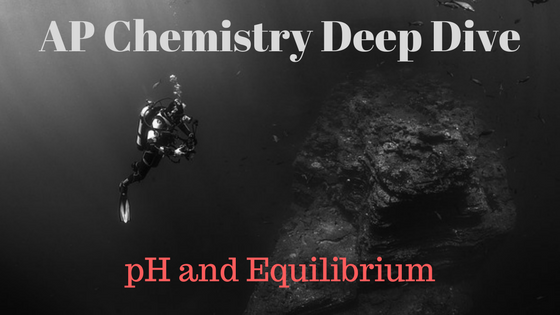- Now, the equilibrium constant,
![K_{a} =\frac{[H^{+}][HC_{3}H_{5}O_{2}^{-}]}{[HC_{3}H_{5}O_{2}]}](http://latex.codecogs.com/gif.latex?K_{a}&space;=\frac{[H^{+}][HC_{3}H_{5}O_{2}^{-}]}{[HC_{3}H_{5}O_{2}]}) becomes
becomes
- Plugging in values,

- Remember that in weak acids, x is very very small. How do we know that it is a weak acid? By the fact that it has an equilibrium constant. Strong acids are “single arrow” reactions, that means there is no equilibrium or equilibrium constant associated.
- So what does this mean? It means that 0.265 – x is approximtely equal to 0.265!! That is incredibly cool, because we just converted a messy quadratic into a LINEAR function.
- Let us now solve
 , or
, or
- Time to put on units.
 M. CONTEXT: we are looking for H+.
M. CONTEXT: we are looking for H+.
- And… we all know that pH = -log [H+]. Plugging in, doing the math,
&space;=&space;2.725)
I know that many of you haven’t gotten to buffers yet, so I decided to truncate this problem with sections (a) and (b). This is the time to post questions, even if they are just about significant digits! Good luck, and ask away.

becomes
, or
M. CONTEXT: we are looking for H+.

